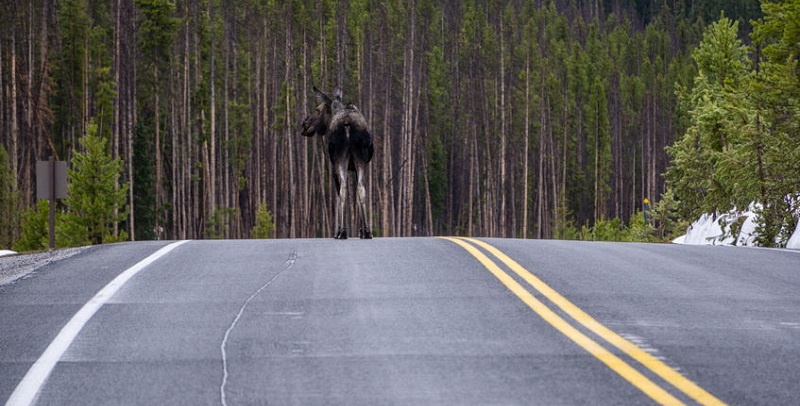Springtime in Colorado is when animals start their trek back up to higher elevations, so it’s common to see them on or near roads. What can you do to reduce your risk of an animal-car collision?
If you’re looking for beautiful, scenic drives, there’s no doubt about it: Colorado is the state for you. The state boasts mountains and valleys, flatlands and trails overflowing with natural beauty. That natural beauty includes wildlife.
Driving along some Colorado roads, you can see everything from bears and moose to foxes and deer. Most drivers are content viewing these majestic creatures from a safe distance, but sometimes they experience some unforeseen direct contact with wildlife. Colliding with an animal can be a traumatic experience for the driver and almost always a deadly one for the animal.
So it’s important to remember that this is the time of year when a lot of animals are on the move throughout the state
Road Deaths No. 1 Threat to U.S. Wildlife
According to Colorado wildlife officials, each year animals move to lower elevations for the winter and as the weather warms up, they move back to higher elevations. All this movement can create a dangerous problem, not only for the animal, but for drivers on Colorado roads.
Here are some startling statistics involving animal-car collisions, compiled by DMV.org, a website that provides automotive and transportation information:
- A collision with some type of wild animal occurs about every 39 minutes.
- 1 out of every 17 car accidents involves wandering wildlife.
- Nearly 90 percent of all wildlife-vehicle collisions happen on two-lane roads.
- 84 percent of all wildlife collisions occur in good weather on dry roads.
- An estimated 200 motorists are killed in the U.S. each year from car-wildlife crashes.
In Colorado, 2014 was costly, both in damages and deaths. According to one news report, 3,960 wildlife-vehicle collisions were reported to law enforcement. Of those collisions, 3,667 involved vehicle damage, 287 involved injuries, and six involved human fatalities. The Colorado Department of Transportation notes that wildlife-vehicle collisions happen year-round and all times of the day.
CDOT notes that over the past decade, on average there have been 3,300 reported wildlife hits each year, a number that does not include unreported hits, which can number from about 2,000 to 4,000 each year.
Collisions are Costly
According to the Rocky Mountain Insurance Information Association, insurance companies pay out over a billion dollars annually in claims for all wildlife-vehicle collisions nationwide. The average property damage cost of animal-car accidents is greater than $3,000. While a majority of these collisions do happen in the fall, transportation officials say deer, elk, and other wildlife live near us, so motorists need to be aware at all times.
Keeping Yourself and the Animals Safe
CDOT reminds all drivers that while some encounters with wild animals may be unavoidable, there are some things that can reduce the likelihood of an accident. They include:
- Driving at slower speeds, which increases reaction time and reduces the risk of a crash.
- Staying alert while driving at dusk and dawn, when many of the state’s wildlife are the most active and more likely to wander onto roadways.
- Scanning ahead, looking for movement along the sides of the street. When driving at night, watch for shining eyes in headlights and be prepared for more than one animal.
- Obeying traffic signs and heeding wildlife warning signs.
These are simple tips that if followed will help ensure safe travels for both passengers and wildlife.

